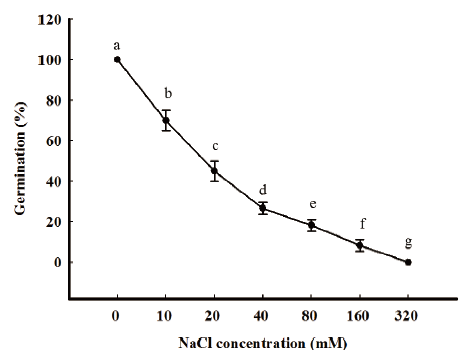Abstract
Exotic weeds are considered as one of the major threats for agro-ecosystem and global food security. Since,
Figures & Tables

Fig. 2. Effect of salinity on the germination of seeds. The means and standard deviations were calculated from three replications. a-g: Letters indicates significant differences ( <0.05) according to Duncan’s multiple range test.


